All About Ceiling Track Systems for Handicapped
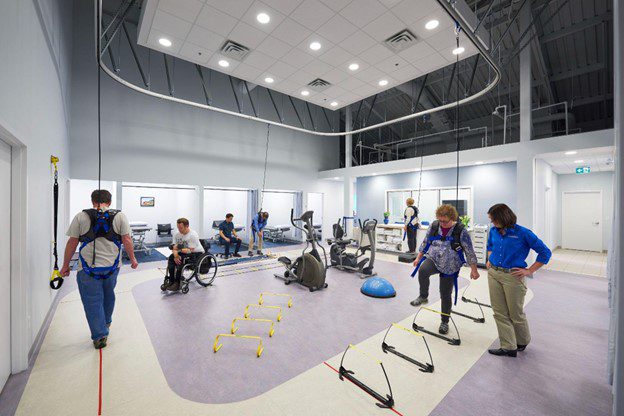
What are Ceiling Track Systems?
A ceiling track system, like the Solo-Step Overhead Track System, is a versatile and adaptive technology designed to enhance mobility for individuals with physical or psychological challenges. The primary focus of a ceiling track system is to facilitate smooth and controlled movement for users with limited mobility. Ceiling track systems are widely used in healthcare facilities, rehabilitation centers, and physical therapy locations to provide a reliable means of mobility assistance while preserving the independence and dignity of individuals facing mobility challenges. The Solo-Step Overhead Track System consists of three main components: an aluminum track, a lanyard rope, and a harness. The aluminum track system is installed into your facility’s ceiling upper structure to ensure the safety of the patient.
The Solo-Step aluminum track is a heavy-duty commercial-grade aluminum alloy extrusion, making it one of the most robust ceiling tracks on the market. Our ceiling-mounted track system can be completely customized to your facility’s needs. The Solo-Step track can be utilized as a straight run, curved, oval, or any custom-shaped system. This means that you can customize your facility layout to your specifications, while also giving your patients peace of mind while performing various exercises.
The Solo-Step lanyard rope can be adjusted to your patients’ height while utilizing the track system. Our lanyard attaches to the ceiling track system by a dynamic 360-degree swivel carabiner, allowing your patients to move back and forth along the track with ease.
Harnesses play an extremely important role in a ceiling track system. They provide safety, comfort, and moveability for patients while performing various exercises and tasks. Solo-Step offers a variety of harnesses for different patient types, including pediatric harnesses, bariatric harnesses, and harnesses ranging in size from XXS-XXL.
How Do Ceiling Track Systems Benefit Individuals with Mobility Challenges?
Ceiling track systems offer significant benefits to individuals with mobility challenges, providing enhanced accessibility and improving their overall quality of life. Here are some key advantages:
- Increases independence
- Improves confidence
- Decreases the fear of falling
- Reduces physical strain for caregivers
- Enhances comfort during rehabilitation
- Promotes an active lifestyle
Overall, ceiling track systems play a crucial role in promoting independence, safety, and improved quality of life for individuals with mobility challenges and their caregivers.
Which Settings Are Ideal for Ceiling Mounted Track Systems?
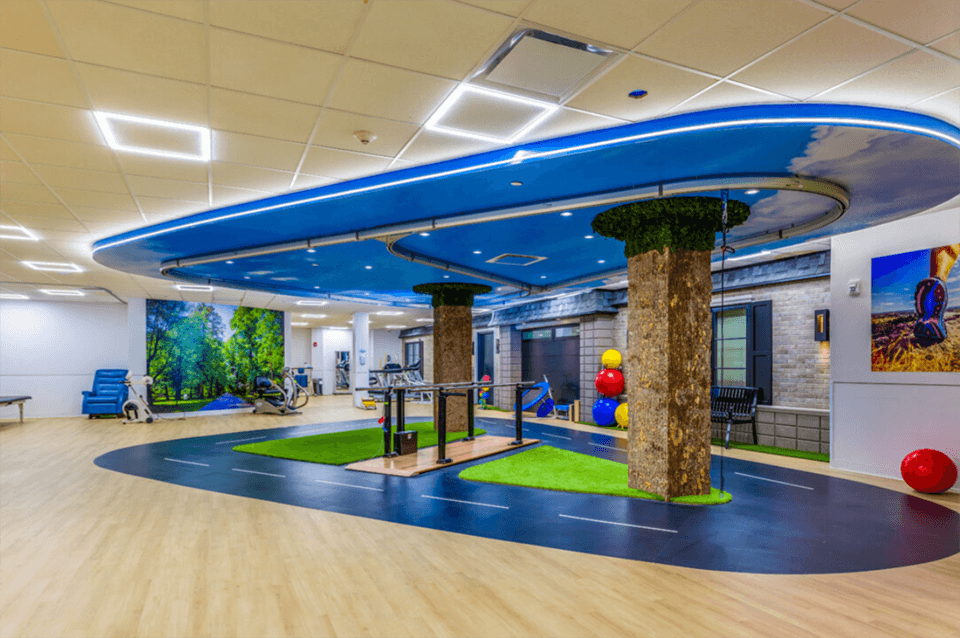
Ceiling-mounted track systems are ideal for various settings where individuals with mobility challenges require assistance with balance or movement. Some ideal settings for ceiling-mounted systems like Solo-Step include:
1. Hospital Facilities
Hospitals benefit significantly from ceiling track systems. These settings often have patients with varying degrees of mobility, making systems like the Solo-Step effective for patients who struggle with their balance, struggle with walking on their own, or have a fear of falling.
2. Physical Therapy Rehabilitation Centers
Facilities focused on physical therapy and rehabilitation frequently use ceiling track systems to assist patients during therapeutic exercises and mobility training. The adaptability of systems like Solo-Step makes it suitable for various rehabilitation activities. Ceiling-mounted track systems allow for various ways of testing a patient’s balance, gait pattern, coordination, and strength.
3. Skilled Nursing Facilities
A ceiling-mounted track system is ideal for skilled nursing facilities due to its versatility and space efficiency. These facilities often cater to individuals with diverse and complex mobility challenges, and ceiling-mounted track systems provide a safe and efficient solution for building residents’ strength and coordination. With limited space in such settings, the ceiling track system offers a space-saving alternative compared to traditional floor-based equipment, ensuring an organized and accessible environment for healthcare professionals. The adaptability of the system makes it suitable for various areas within the facility, contributing to increased independence for residents during daily activities while minimizing the risk of injuries during transfers. Overall, the ceiling-mounted track system enhances the quality of care by addressing unique mobility needs in a secure and dignified manner.
4. Special Education Spaces
Schools and institutions catering to individuals with disabilities, especially those with limited mobility, may incorporate ceiling track systems in classrooms, therapy rooms, or other relevant spaces. This ensures a supportive and inclusive learning environment.
5. Biomechanics Laboratories
A ceiling-mounted track system is particularly ideal for a biomechanics lab due to its ability to facilitate precise and controlled movements for research subjects during biomechanical studies. In a biomechanics lab, researchers often analyze human or animal movements in various conditions, and the ceiling-mounted track system provides a versatile platform for conducting such experiments. Additionally, the overhead configuration minimizes the risk of tripping hazards and provides an unobstructed view for cameras and sensors, ensuring accurate and unimpeded data collection. The adaptability of the ceiling-mounted track system is beneficial for creating customized experimental setups, supporting a wide range of biomechanical research applications in a controlled and efficient manner.
6. Veterans Affairs Clinics
A ceiling-mounted track system is ideal for a Veterans Affairs (VA) clinic due to its versatility in enhancing mobility support for veterans with diverse physical challenges. This system can be utilized in different areas of the clinic, such as examination rooms, therapy spaces, and accessible bathrooms, contributing to a positive care experience for veterans. The space-saving design aligns with the clinic’s commitment to maintaining organized and accessible environments. The adaptability of the ceiling track system supports the varied needs of the veteran population, providing a solution that minimizes disruptions and hazards associated with traditional mobility aids.
What Disabilities Do Ceiling Track Systems Aim to Assist?
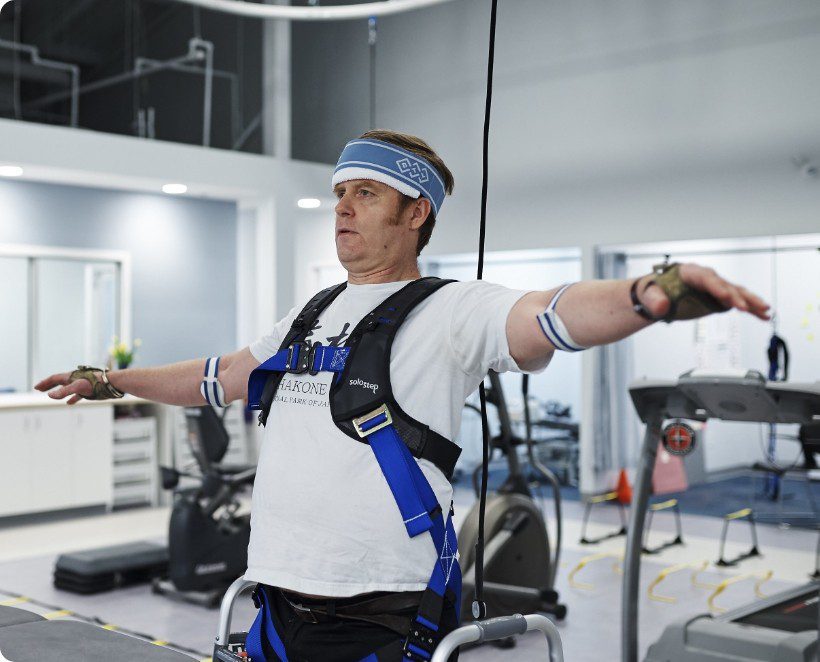
A ceiling track system is designed to assist individuals with various disabilities and mobility challenges. This includes, but is not limited to:
1. Mobility Impairments
Individuals with limited ability to walk or move independently, such as those with paralysis, muscular dystrophy, or other mobility-related conditions, can benefit from the assistance provided by a ceiling track system.
2. Neurological Conditions
People with neurological disorders, such as multiple sclerosis, cerebral palsy, or Parkinson’s disease, may experience difficulties with mobility and benefit from the support offered by a ceiling track system.
3. Rehabilitation
Patients undergoing rehabilitation for injuries, surgeries, or medical procedures often require assistance with transfers and movement, making the ceiling track system a valuable tool in rehab facilities.
4. Aging Population
The elderly, especially those with age-related mobility issues or conditions like arthritis, can use ceiling track systems to maintain independence and receive assistance with daily movements.
5. Spinal Cord Injuries
Spinal cord injuries may limit mobility in certain parts of a patient’s body, and a ceiling track system can aid in safe patient handling and movement within a space.
6. Developmental Disabilities
People with developmental disabilities affecting motor skills or coordination may find the support and safety provided by a ceiling track system beneficial in various environments.
7. Post-Surgery or Trauma
Individuals recovering from surgeries, traumatic injuries, or accidents may require assistance in moving from one place to another during their recovery, and a ceiling track system facilitates this process.
The versatility of ceiling track systems makes them very valuable in healthcare settings, rehabilitation centers, and more. They offer inclusive and accessible solutions for individuals with a wide range of disabilities.
How Much Weight Can A Ceiling Track System Support?
The weight capacity of a ceiling track system depends on various factors, including the specific design and materials used in the system, as well as the installation method and the structural integrity of the ceiling itself.
To determine the weight capacity of a specific ceiling track system, you should refer to the manufacturer’s specifications and guidelines. The manufacturer typically provides information on the maximum weight the system can support safely. Exceeding the specified weight limit can compromise the safety and functionality of the system.
The Solo-Step aluminum track can safely hold up to 2000 pounds. Solo-Step branded harnesses can hold patients up to 420 pounds while our bariatric harnesses can safely hold up to 600 pounds.
Are Ceiling-Mounted Track Systems Customizable?
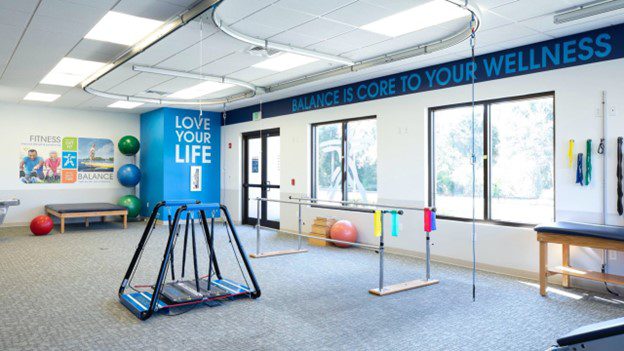
Many ceiling-mounted track systems like the Solo-Step track system are customizable to the facility’s needs. Solo-Step’s track customization options include:
- Customizable track length
- Custom track shapes (Ovals, curves, etc.)
- Mounting attachments depending on ceiling types
- Accessories such as end stops, connectors, brackets, and more
What Safety Features Do Ceiling Track Systems Have?
Ceiling track systems often incorporate various safety features to ensure the well-being of users and to prevent accidents. While specific features can vary between different manufacturers and models, here are some common safety features found in ceiling track systems:
1. Weight Capacity Limits
Manufacturers specify the maximum weight capacity of the ceiling track system. It’s crucial to adhere to these limits to prevent overloading, which can compromise the integrity of the system.
2. Secure Attachment Points
Proper installation is essential for safety. Ceiling track systems are designed to be securely attached to the ceiling structure, and installers should follow manufacturer guidelines and local building codes to ensure stability.
3. Anti-Derailment Mechanisms
Many ceiling track systems have anti-derailment features to prevent carriers or sliding components from accidentally coming off the track.
4. Safety Stops and End Stops
These features prevent carriers or attachments from sliding off the ends of the track, enhancing the overall safety of the system.
5. Smooth Operation
Well-designed systems ensure smooth and controlled movement, reducing the risk of sudden jolts or stops that could lead to accidents.
6. Durability and Corrosion Resistance
Materials used in the construction of ceiling track systems are often chosen for their durability and resistance to corrosion, ensuring a long lifespan and maintaining structural integrity.
7. Compliance with Standards
Reputable manufacturers design their ceiling track systems to comply with relevant safety standards and regulations. Compliance with industry standards ensures that the system meets specified safety requirements.
Ceiling Track Systems like the Solo-Step incorporate these safety standards to ensure the safety and comfort of patients and employees during rehabilitation and balance and strength training. Solo-Step offers a complete 5-year track and trolley warranty to ensure that safety standards are met for years to come.
Users and installers should always follow the manufacturer’s guidelines and recommendations for installation, maintenance, and usage. Regular inspections and maintenance checks are also essential to ensure that the system remains safe and operational over time. If there are any concerns or issues, consulting with the manufacturer or a professional installer is advisable.
Are Ceiling Track Systems Electric or Manual?
Ceiling track systems can be either electronic or manual, depending on their design, purpose, and the needs of the users. Here’s a brief overview of each type:
Electronic Ceiling Track Systems:
Powered Systems: Some ceiling track systems are equipped with electric motors or power units. These systems may be motorized and can be controlled electronically. These systems offer more advanced support for patients who may need additional assistance walking or moving.
Remote Control: Electronic ceiling track systems may come with remote control functionality.
Electronic ceiling track systems tend to be much more costly than manual ceiling track systems like the Solo-Step. Manual ceiling track systems like the Solo-Step can offer the same patient support as electronic ceiling track systems.
Manual Ceiling Track Systems:
Manual Adjustments: Manual ceiling track systems like the Solo-Step require caregivers or therapists to make adjustments to the system as needed. The Solo-Step is simple to adjust to a lower or higher level. A remote control is not provided with manual ceiling track systems because there are no electrical components.
Human-Powered Systems: Some ceiling track systems are designed to be operated by human effort, either through pulling, pushing, or using a manual lever. To see how manual track systems like the Solo-Step are utilized, check out our how-to video below!
What are the Benefits of Manual Ceiling Track Systems?
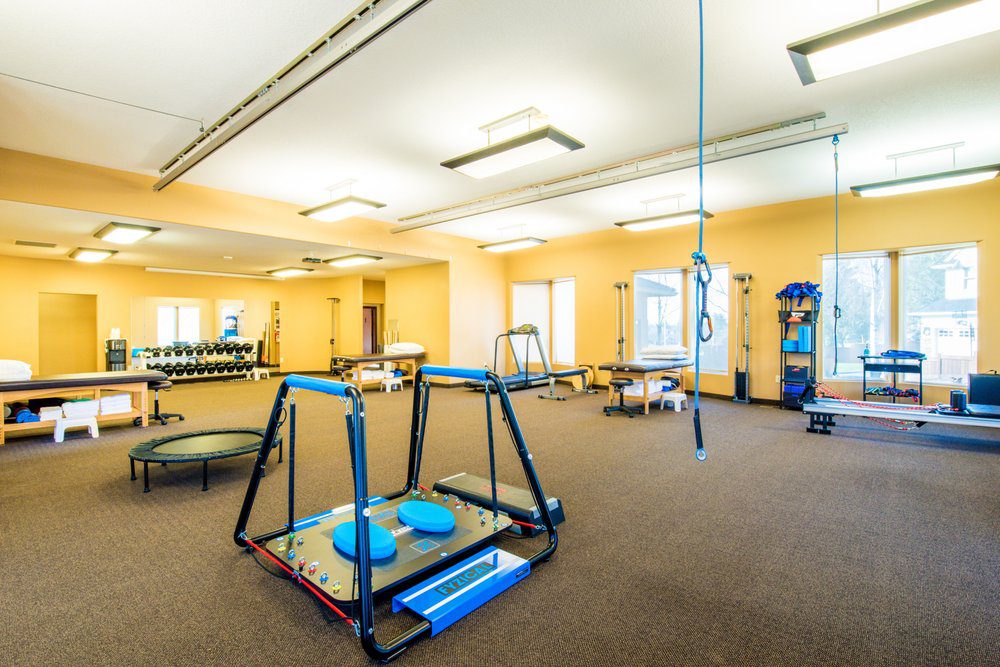
Manual ceiling track systems like Solo-Step offer several benefits over electronic ceiling track systems, making them a practical and cost-effective solution for certain applications. Here are some advantages of manual ceiling track systems:
Cost-Effective: Manual ceiling track systems are often more budget-friendly compared to their electronic counterparts. This makes them an attractive option for individuals or facilities with budget constraints.
Simple Operation: Manual systems are straightforward to operate. Users or caregivers can move the trolley along the track with ease.
No Dependency or Power Sources: Since manual systems don’t rely on electricity or batteries, they can be used in environments where power sources may be limited or unreliable. This can be beneficial in many healthcare or physical therapy settings.
Reliability: Manual systems are generally considered reliable and durable. With fewer electronic components, there is less potential for technical malfunctions, reducing the need for frequent maintenance.
Ease of Installation: Manual ceiling track systems are often easier to install than electrical systems. This can result in quicker setup times and reduced installation costs. Installation for the Solo-Step Track System typically takes less than one day.
Lower Maintenance Costs: Fewer electronic components and simpler mechanisms mean lower maintenance costs over time. Regular inspections and lubrication may be sufficient to keep the system in good working order.
Flexibility in Use: Users can control the movement of the patient at their own pace, providing a more customized and controlled experience.
Independence for Users: Manual systems may require some physical effort, but they still provide a level of independence for users. Individuals can control their movements with the assistance of caregivers or physical therapists, contributing to a sense of independence.
It’s important to note that the choice between manual and electronic ceiling track systems depends on the specific needs and preferences of users, as well as the intended application and available budget. If you’re interested in learning more about the Solo-Step Overhead Track and Harness System, click the button below!